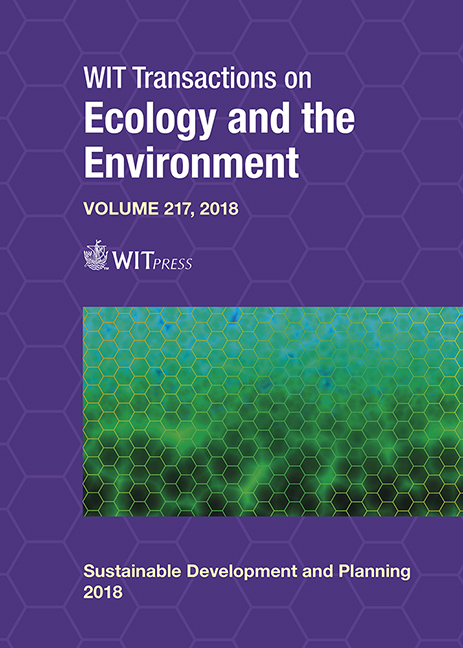DECAYED WOODY MATERIAL FROM MUSHROOM CULTIVATION: CHARACTERIZATION OF LIQUEFACTION
Price
Free (open access)
Transaction
Volume
217
Pages
12
Page Range
481 - 492
Published
2018
Size
1,475 kb
Paper DOI
10.2495/SDP180431
Copyright
WIT Press
Author(s)
QINGYUE WANG, SAYURI KAWAMURA
Abstract
Decayed woody material from mushroom cultivation is one of the most important waste materials in Japan, as almost 300 tonnes are released each year. It is nearly impossible to reuse these resources, because of the damage to its original form and deterioration of its strength. These decayed woody materials could be used to create a valid chemical product from the main components’ decomposition: this could reduce waste material and its environmental impact, especially in developing countries. This article focuses on the liquefied portion of decayed woody materials that is released from mushroom cultivation. By analysis of the products from major woody holocellulose (i.e. cellulose and hemicellulose) and lignin, we found the same ratios of weight loss in decayed woody samples, compared with the original woody samples. All the main components of the decayed wood were partially degraded. The crystallinities within woody samples were decreased with sufficient long-term decay. After these decayed woody samples were liquefied and compared with the original samples, we conducted liquefaction tests using ethylene glycol, glycerine, and the catalyst sulfuric acid. The ratios of residue during liquefaction showed that the liquefied characteristics of decayed woody material released from mushroom cultivation were equal to or less than that of the original wood. In addition, the results as determined by a Fourier-transform infrared spectroscopy showed that the liquefied ratios of decayed woody samples could be equal to or higher than those original woody samples without decay.
Keywords
agricultural waste, decayed wood, liquefaction, mushroom cultivation, white-rot fungus, wood decay, forestry waste





